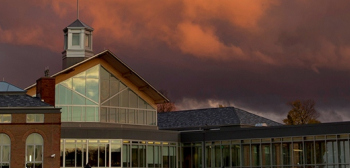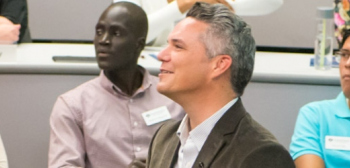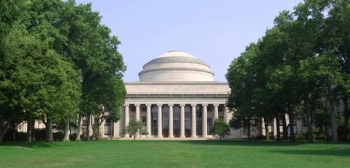石溪大学
About
Read more
Read less
Stony Brook University is one of America’s most dynamic public universities and a magnet for outstanding students. A member of the elite Association of American Universities, Stony Brook is one of the 62 top research institutions in North America, with $182.7 million in annual sponsored research and 1,866 active research projects. Stony Brook faculty are leaders in significant national and worldwide projects, including uncovering the causes of lobster mortality in Long Island Sound, searching for the origins of man in Kenya’s Turkana Basin, and managing the national parks of Madagascar. They have made significant contributions to NASA initiatives, such as examining Martian minerals for evidence of life and other phenomena, and their work has led to such groundbreaking discoveries as a new species of mouse lemur, the smallest primate in the world; the cause of Lyme disease; and the invention of the MRI technology that won the Nobel Prize for Medicine. Stony Brook offers more than 200 undergraduate programs, 100 master’s programs and 40 doctoral programs, residing in 12 colleges and schools: College of Arts and Sciences, College of Business, College of Engineering and Applied Sciences, Graduate School, School of Dental Medicine, School of Health Technology and Management, School of Journalism, School of Marine and Atmospheric Sciences, School of Medicine, School of Nursing, School of Professional Development and School of Social Welfare. Stony Brook’s Undergraduate Colleges for freshmen provide a close-knit residential-based community, featuring small first-year seminars and close connections to faculty. The student retention rate is 91.6 percent. Our undergraduates are encouraged to explore — in the laboratory through our Undergraduate Research and Creative Activities program, the rainforests of Madagascar, or Discovery Bay in Jamaica, West Indies. The School of Marine and Atmospheric Sciences features waterfront learning at Stony Brook Southampton’s new Marine Sciences Research Center. And Stony Brook’s study abroad programs provide unique learning opportunities in countries around the globe, including Argentina, Italy, Jamaica, Korea, Madagascar and Tanzania. Stony Brook’s diverse student body includes roughly 16,000 undergraduates and 8,000 graduate and professional students from nearly all 50 states and more than 100 countries. Stony Brook is a highly selective institution that enrolls students who demonstrate the intellectual curiosity and academic ability to succeed. Stony Brook was one of only 10 universities given a recognition award by the National Science Foundation for integrating research and education at the undergraduate level. Opportunities for first-rate graduate and undergraduate research abound. Stony Brook students are offered unique research opportunities at nearby Brookhaven National Laboratory — co-managed by the University — whose facilities include the Relativistic Heavy Ion Collider, Center for Functional Nanomaterials, National Synchrotron Light Source, National Synchrotron Light Source II, NASA Space Radiation Facility, Accelerator Test Facility, Computational Science Center, and Brookhaven Linac Isotope Producer. The Laboratory’s almost 3,000 scientists, engineers and staff are joined each year by more than 4,000 visiting researchers from around the world. Brookhaven research has been honored by seven Nobel Prizes. The C.N. Yang Institute for Theoretical Physics, founded by Nobel Prize-winning physicist and Stony Brook...
About
Stony Brook University is one of America’s most dynamic public universities and a magnet for outstanding students. A member of the elite Association of American Universities, Stony Brook is one of the 62 top research institutions in North America, with $182.7 million in annual sponsored research and 1,866 active research projects. Stony Brook faculty are leaders in significant national and worldwide projects, including uncovering the causes of lobster mortality in Long Island Sound, searching for the origins of man in Kenya’s Turkana Basin, and managing the national parks of Madagascar. They have made significant contributions to NASA initiatives, such as examining Martian minerals for evidence of life and other phenomena, and their work has led to such groundbreaking discoveries as a new species of mouse lemur, the smallest primate in the world; the cause of Lyme disease; and the invention of the MRI technology that won the Nobel Prize for Medicine. Stony Brook offers more than 200 undergraduate programs, 100 master’s programs and 40 doctoral programs, residing in 12 colleges and schools: College of Arts and Sciences, College of Business, College of Engineering and Applied Sciences, Graduate School, School of Dental Medicine, School of Health Technology and Management, School of Journalism, School of Marine and Atmospheric Sciences, School of Medicine, School of Nursing, School of Professional Development and School of Social Welfare. Stony Brook’s Undergraduate Colleges for freshmen provide a close-knit residential-based community, featuring small first-year seminars and close connections to faculty. The student retention rate is 91.6 percent. Our undergraduates are encouraged to explore — in the laboratory through our Undergraduate Research and Creative Activities program, the rainforests of Madagascar, or Discovery Bay in Jamaica, West Indies. The School of Marine and Atmospheric Sciences features waterfront learning at Stony Brook Southampton’s new Marine Sciences Research Center. And Stony Brook’s study abroad programs provide unique learning opportunities in countries around the globe, including Argentina, Italy, Jamaica, Korea, Madagascar and Tanzania. Stony Brook’s diverse student body includes roughly 16,000 undergraduates and 8,000 graduate and professional students from nearly all 50 states and more than 100 countries. Stony Brook is a highly selective institution that enrolls students who demonstrate the intellectual curiosity and academic ability to succeed. Stony Brook was one of only 10 universities given a recognition award by the National Science Foundation for integrating research and education at the undergraduate level. Opportunities for first-rate graduate and undergraduate research abound. Stony Brook students are offered unique research opportunities at nearby Brookhaven National Laboratory — co-managed by the University — whose facilities include the Relativistic Heavy Ion Collider, Center for Functional Nanomaterials, National Synchrotron Light Source, National Synchrotron Light Source II, NASA Space Radiation Facility, Accelerator Test Facility, Computational Science Center, and Brookhaven Linac Isotope Producer. The Laboratory’s almost 3,000 scientists, engineers and staff are joined each year by more than 4,000 visiting researchers from around the world. Brookhaven research has been honored by seven Nobel Prizes. The C.N. Yang Institute for Theoretical Physics, founded by Nobel Prize-winning physicist and Stony Brook...
University highlights
- 2012#300
- 2014#=338
- 2015#=352
- 2016#372
- 2017#=390
- 2018#=382
- 2019#349
- 2020#=359
- 2021#=373
- 2022#=378
- 2023#=416
- 2024#=396
- 2025#460
- 2026#=452
QS Stars is a rating system that helps you select the right university based on your
interests. It provides a detailed look at an institution, identifying which universities rate highest in
the
specific topics that matter to you, like facilities, graduate employability, social responsibility,
inclusiveness, and more.
Campus locations
Stony Brook,
Stony Brook University , Stony Brook , New York , United States , 11794
Southampton,
39 Tuckahoe Road , Southampton , New York , United States , 11968
Similar Universities
罗彻斯特理工大学 (RIT)
Lomb Memorial Drive, Rochester
萨凡纳艺术与设计学院
516 Drayton St, Savannah
乔治华盛顿大学商学院
George Washington University, Washington D.C.
德克萨斯大学阿灵顿大学
701 S. Nedderman Drive, Arlington
Seton Hall University
400 S Orange Ave, South Orange, South Orange
雷鸟全球管理学院
400 E Van Buren, Phoenix
Test preparations
Stony Brook University, State University of New York
CN



















